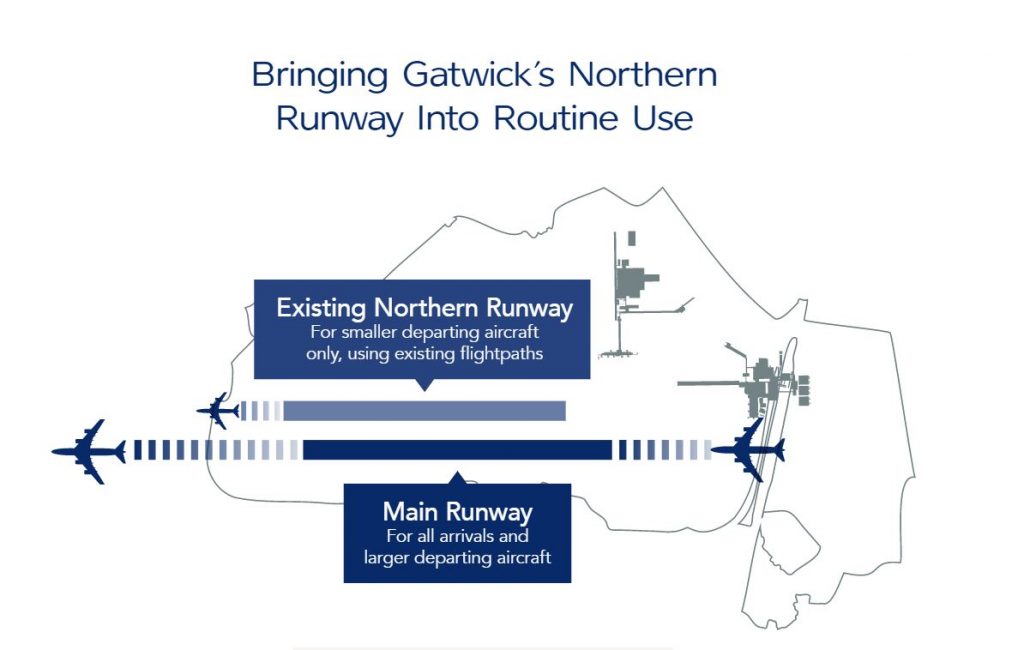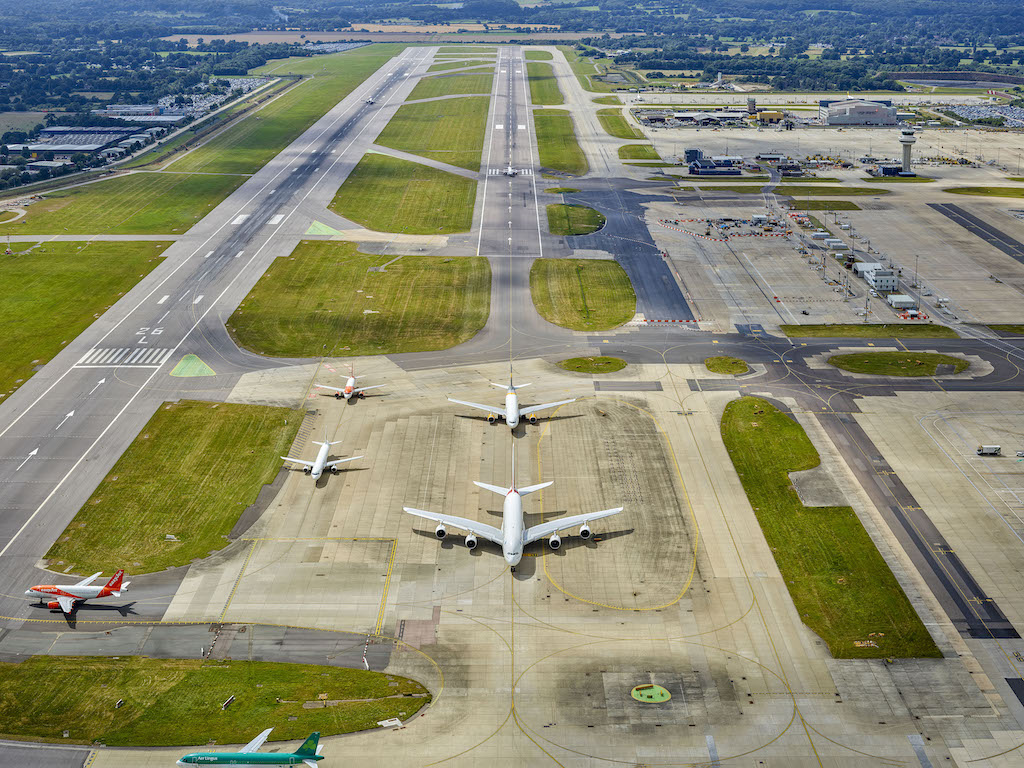

Aerial photographs, architecture, housing, ports, airports, marinas
- Twelve-week public consultation on the Northern Runway plans will run from 9th September 2021 to 1st December 2021 with materials available at www.gatwickairport.com/futureplans.
- Plans are a low impact way of unlocking new capacity by using existing runway infrastructure.
- An additional £1.5bn GVA expected to be generated for the local area and region.
Gatwick has today announced that a public consultation will start on the 9th September 2021 on plans to bring its existing Northern Runway into routine use alongside its Main Runway.
The scheme will help secure the airports long-term growth, generating approximately 18,400 additional jobs by 2038 and an additional expected £1.5bn GVA to the region. While passenger numbers currently remain low due to the COVID-19 pandemic, Gatwick is taking its plans for growth forward now as we still expect to be capacity constrained in the time it would take to secure approvals, complete construction and start operations.
The proposed plans would allow the airport’s Northern Runway to be brought into routine use, for departing aircraft, by repositioning its centre line further north by 12 metres. This would enable dual runway operations with the airport’s Main Runway whilst meeting all international safety standards.
The plans would add resilience to Gatwick’s operations (reducing delays and congestion), bring new global connections and allow an increase in passenger capacity to approximately 75 million passengers per annum by 2038. Other elements of the proposals include improved airport access, highway improvements, as well as additional landscape/ecological planting and environmental mitigation.
The project proposals are low impact and are in line with Government policy of making best use of existing runways. The project will be delivered in a sustainable way which helps to achieve the Government’s overall goal of net zero emissions by 2050.
As the proposed Northern Runway plans are considered a Nationally Significant Infrastructure Project, the airport plans to apply for a Development Consent Order (DCO) to build and operate the scheme. Before the application is submitted Gatwick will be running a twelve-week public consultation, for anyone who is interested in reviewing or commenting on the proposals, from 9th September 2021 to 1st December 2021.
The Statement of Community Consultation (setting out how Gatwick proposes to consult the local community on the proposed Northern Runway project) has been published today at www.gatwickairport.com/futureplans. Full consultation materials will be made available on the www.gatwickairport.com/futureplans web pages from the 9th September along with a virtual exhibition and an option to book a telephone surgery with project experts or to request a virtual briefing for local stakeholder groups.
For those people who may find online access difficult Gatwick will be operating a mobile project office which will visit key areas around West and East Sussex, Surrey and Kent and all consultation materials will also be available at various deposit points, including libraries in those areas.
Stewart Wingate, Chief Executive Officer, Gatwick Airport, said: “While we are currently experiencing low passenger and air traffic volumes due to the global pandemic, we are confident that Gatwick will not only fully recover to previous passenger levels, but has the potential to continue to grow back into one of Europe’s premier airports.
“Our plans to bring our existing Northern Runway into routine use will not only help to secure that growth but will also ensure many thousands of additional jobs and a vital boost to the economy for our local region.
“We would like to hear views from local people and interested groups on the proposed Northern Runway Project as part of our comprehensive public consultation process and encourage everyone to take time to review our plans.
“Aside from the economic benefits our plans will have, we remain committed to our sustainability goals, and our Northern Runway plans are designed to be a low impact way of unlocking new capacity from our existing infrastructure, much of which is already in place.”

